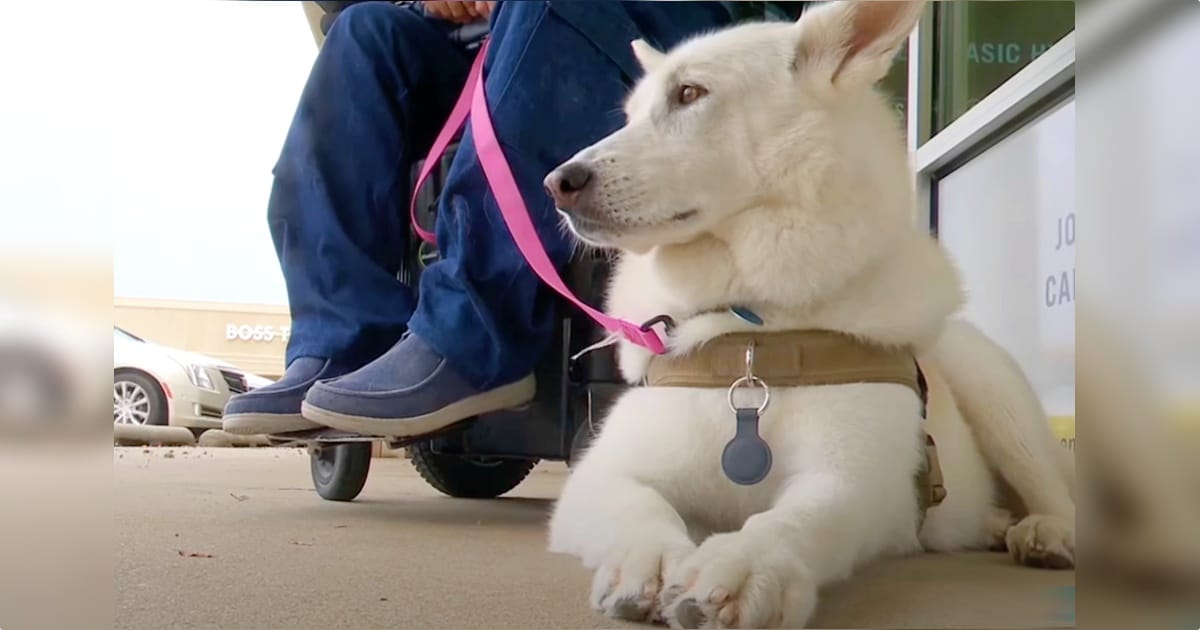 Shutterstock
Shutterstock
Dogs are known for their remarkable senses, with hearing being one of the most impressive. While humans primarily rely on eyesight, dogs use a combination of sight, smell, and sound, with hearing as a standout feature. They can detect sounds far beyond human perception, making their auditory capabilities truly extraordinary. This sharp sense of hearing plays a vital role in their behavior, communication, and understanding of their surroundings. Dogs’ exceptional hearing helps them navigate their environment and connect with the world in ways that are beyond human ability.
Dogs Can Hear Higher Frequencies Than Humans
 Shutterstock
Shutterstock
One of the most impressive aspects of a dog’s hearing is their ability to detect higher frequencies. While the human hearing range typically falls between 20 Hz to 20,000 Hz, dogs can hear sounds up to 65,000 Hz. This means that dogs can pick up high-pitched noises that humans are completely unaware of, such as the ultrasonic sounds emitted by rodents or high-frequency whistles. This sensitivity is a result of evolution; dogs’ ancestors needed this capability to hunt small prey and stay alert to potential dangers in their environment. This ability also explains why dogs respond so well to high-pitched training whistles that go unnoticed by their human counterparts.
Dogs Can Pinpoint the Source of a Sound
 Shutterstock
Shutterstock
Dogs have an incredible ability to determine the source of a sound with great accuracy. Thanks to the unique shape and mobility of their ears, dogs can move each ear independently to pick up and analyze sounds from various directions. This allows them to identify the location of a sound source within milliseconds. Their ear muscles are highly developed and capable of tilting and rotating their ears up to 180 degrees, enhancing their auditory precision. This skill is essential for survival, as it enables dogs to react quickly to sounds that may signal danger or the presence of prey.
Puppies Are Born Deaf
 Shutterstock
Shutterstock
It might surprise you to know that puppies are born completely deaf. Newborn dogs only start hearing sounds when they are around two weeks old, as their ear canals remain closed during their early days of life. This initial period of deafness is part of their development, allowing them to grow without being overwhelmed by sensory input. Once their ears open, a puppy’s hearing develops rapidly, and by the time they reach a few weeks of age, their hearing capabilities surpass those of adult humans. This rapid development is crucial for their awareness and interaction with the world as they learn and grow.
Dogs Are Sensitive to Subtle Sounds
 Shutterstock
Shutterstock
Dogs’ heightened sense of hearing makes them extremely sensitive to even the subtlest sounds. They can hear a wider range of frequencies and detect sounds at a much lower volume than humans can. For example, while a person might not hear someone walking quietly outside the house, a dog will pick up on the faintest footstep or rustle of leaves. This acute sense of hearing is why dogs often react before humans even realize there is something to notice, making them excellent watchdogs and companions in alerting their owners to potential threats or visitors.
Dogs Hear Emotions in Human Voices
 Shutterstock
Shutterstock
Beyond just picking up sounds, dogs have an extraordinary ability to detect emotions in human voices. Research has shown that dogs can distinguish between different tones and pitch changes, enabling them to understand when their human is happy, upset, or angry. This is one of the reasons why dogs respond so well to positive reinforcement and affectionate speech. Their keen hearing allows them to sense changes in tone that convey emotions, helping them better understand and connect with their owners. This unique capability contributes to the deep bond dogs share with humans and enhances their role as empathetic companions.
Dogs Use Their Ears for Communication
 Shutterstock
Shutterstock
A dog’s ears are not just for hearing; they play a significant role in communication, too. Dogs use their ears to express their emotions and intentions, sending signals to other dogs and humans. When a dog’s ears are perked up and facing forward, it usually indicates alertness or curiosity. On the other hand, ears laid back can signal submission or anxiety. The mobility of a dog’s ears allows them to express a range of emotions and respond to different sounds. This dual function of hearing and communication is essential for social interactions within their packs and with humans.
Some Breeds Have Better Hearing Than Others
 Shutterstock
Shutterstock
Not all dogs hear equally well. While all breeds have impressive hearing compared to humans, certain breeds have exceptionally acute hearing. Breeds that were developed for hunting and herding, such as German Shepherds, Cocker Spaniels, and Border Collies, often have heightened auditory capabilities. Their sharp hearing was crucial for tasks such as detecting prey or listening for commands over long distances. Similarly, breeds with large, erect ears, like the Belgian Malinois, often have an advantage in detecting and processing sounds. The breed-specific differences in hearing abilities highlight how diverse and specialized dogs’ sensory adaptations can be.
When Dog Ears Are All Ears
 Shutterstock
Shutterstock
Dogs’ hearing abilities highlight their remarkable adaptations and unique role in the animal kingdom. Capable of detecting high frequencies, pinpointing sound sources, and using their ears for communication, dogs possess auditory skills that surpass human experience. Their keen sense of hearing enables them to detect subtle changes in tone and emotion, making them intuitive companions who understand us in ways that feel almost magical. These exceptional hearing traits contribute to their responsiveness and empathetic nature, showcasing just how special dogs are as partners and friends in our lives.

 2 weeks ago
12
2 weeks ago
12


















 English (US) ·
English (US) ·